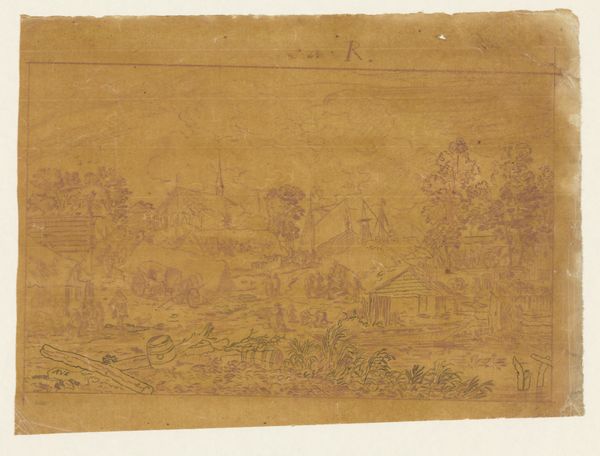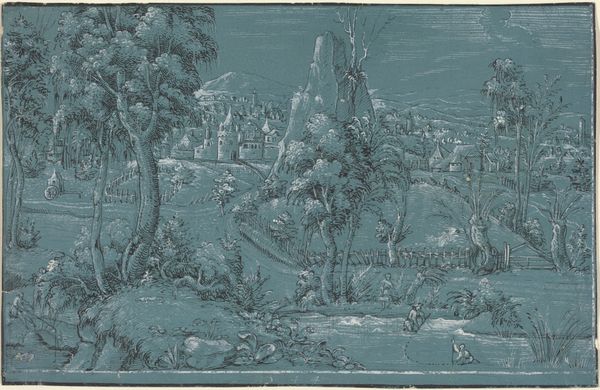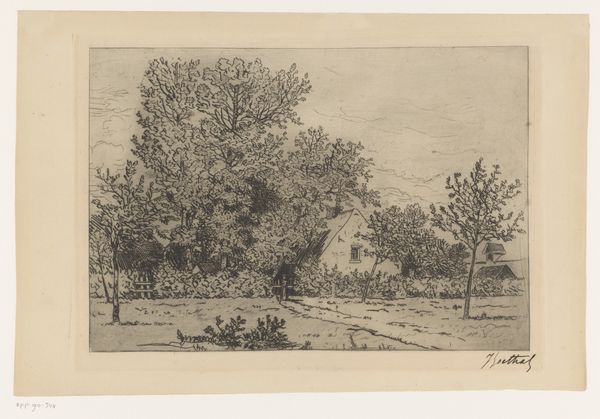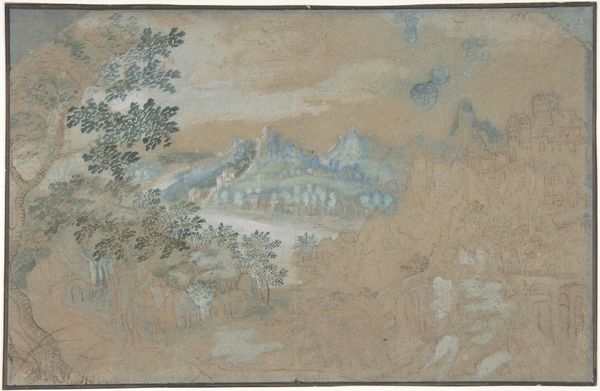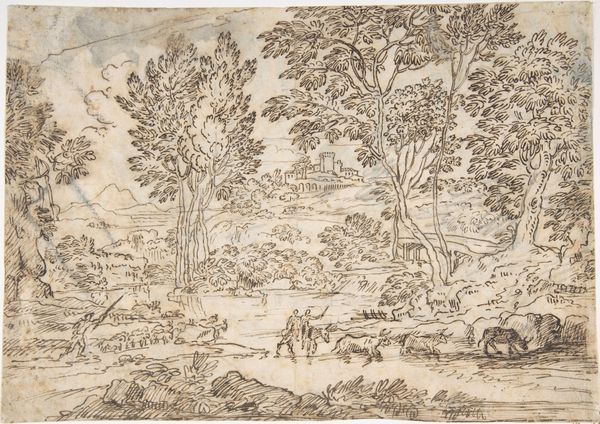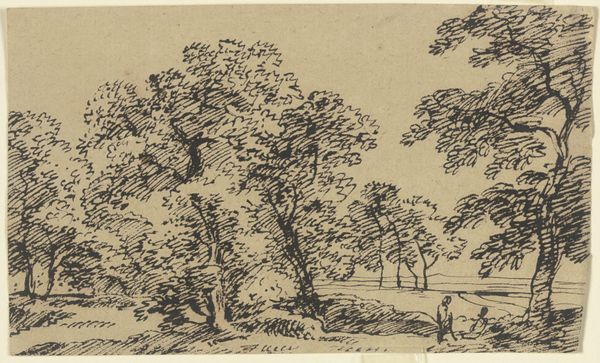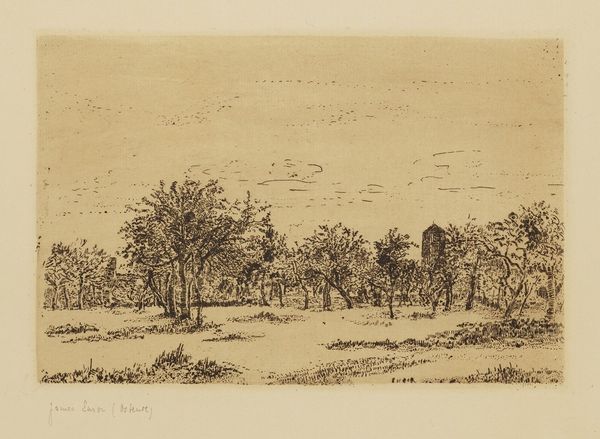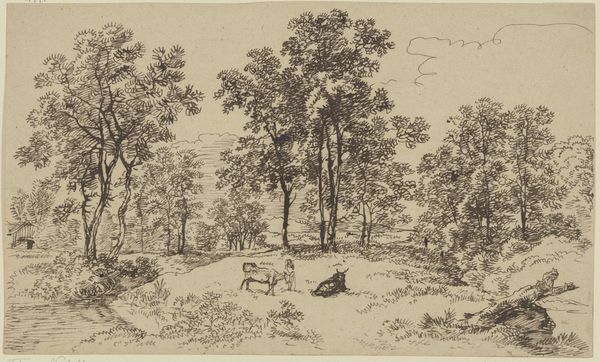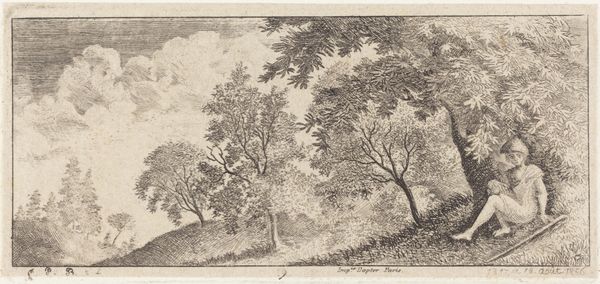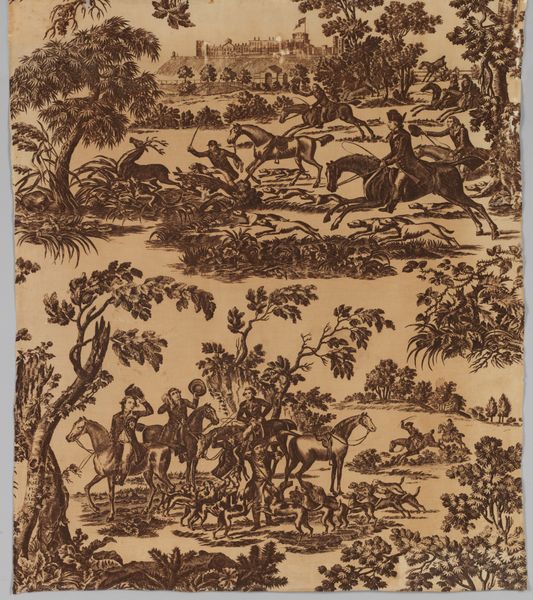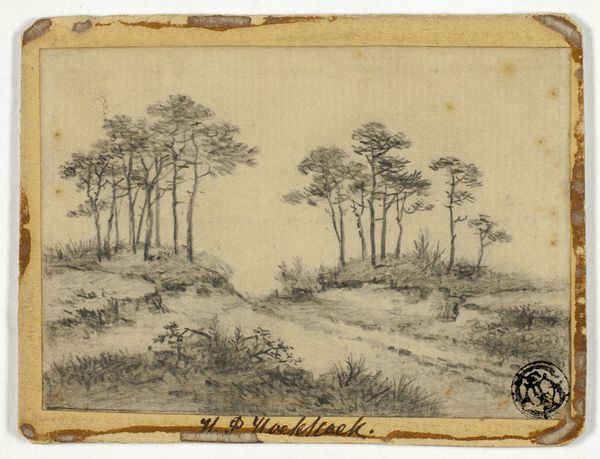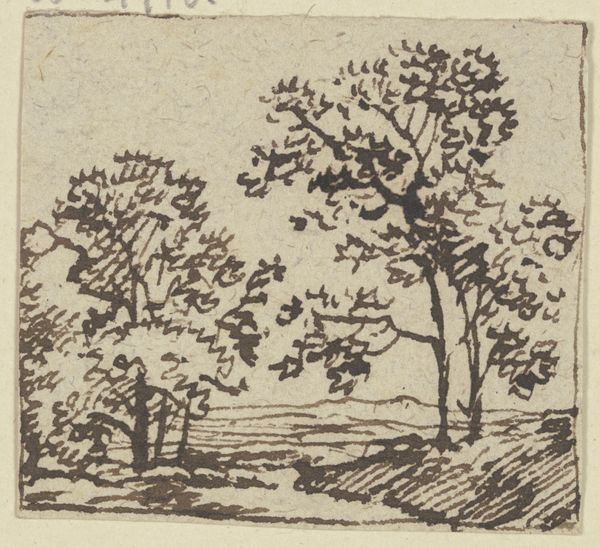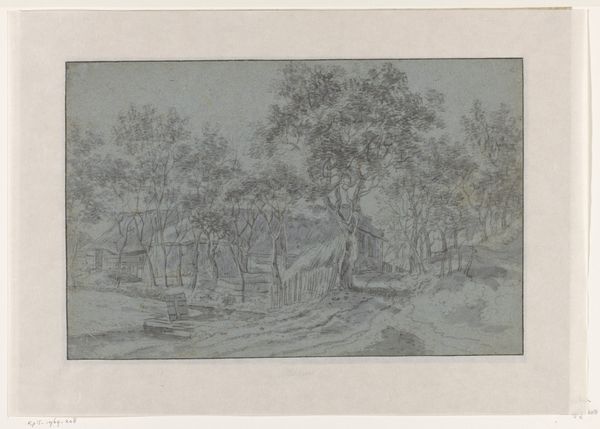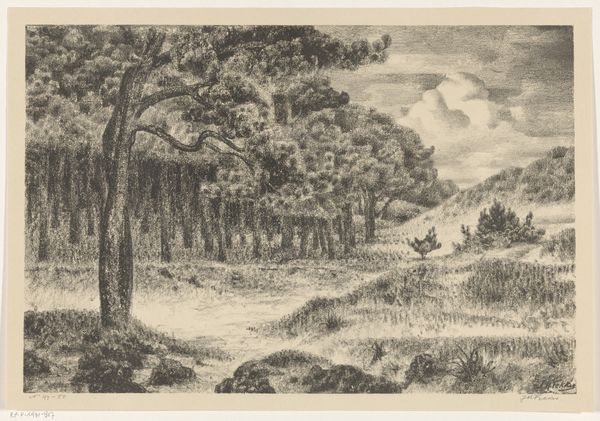
painting, watercolor
#
water colours
#
narrative-art
#
painting
#
asian-art
#
landscape
#
figuration
#
watercolor
#
miniature
Dimensions: 8 15/16 x 11 11/16 in. (22.7 x 29.7 cm)
Copyright: Public Domain
This painting, titled "Sita at the Hermitage of Bharadvaja," presents a verdant landscape where figures from the Ramayana reside in peaceful harmony. The dominant visual symbol here is the hermitage, a retreat from the temporal world and a site of spiritual refuge. Note the ascetics seated in humble dwellings, reminiscent of anchorites of early Christian art who sought isolation in the wilderness. Across cultures, the hermitage motif signifies a yearning for inner peace and divine connection. Consider how this image, with its focus on natural harmony and spiritual seeking, echoes in later Western art. Perhaps the Romantic painters' reverence for nature or the Pre-Raphaelites' depiction of idealized pastoral life. These are but cyclical reappearances, echoing and evolving across time, revealing our enduring quest for meaning and tranquility amidst life's chaos.
Comments
minneapolisinstituteofart almost 2 years ago
⋮
In a scene most likely from the Ramayana, Sita is shown, after her rescue, in a wilderness setting surrounded by trees bejeweled with floral creepers and garlands. Sitting on a bed of leaves, she converses with two attendants who are watched over by a prince, perhaps her brother-in-law, Lakshmana. To the right, in a forest hermitage comprised of several huts, a group of ascetics converses under a canopy, probably representing the sage Valmiki, author of the Ramayana, and his disciples. The power of Valmiki's message is symbolically represented by the peaceful coexistence of natural enemies such as antelopes and tigers, elephant and snake. Artists at Kangra begin to use elevated vantage points, diminutive landscape elements, and flowering trees such as these during the late eighteenth century.
Join the conversation
Join millions of artists and users on Artera today and experience the ultimate creative platform.
